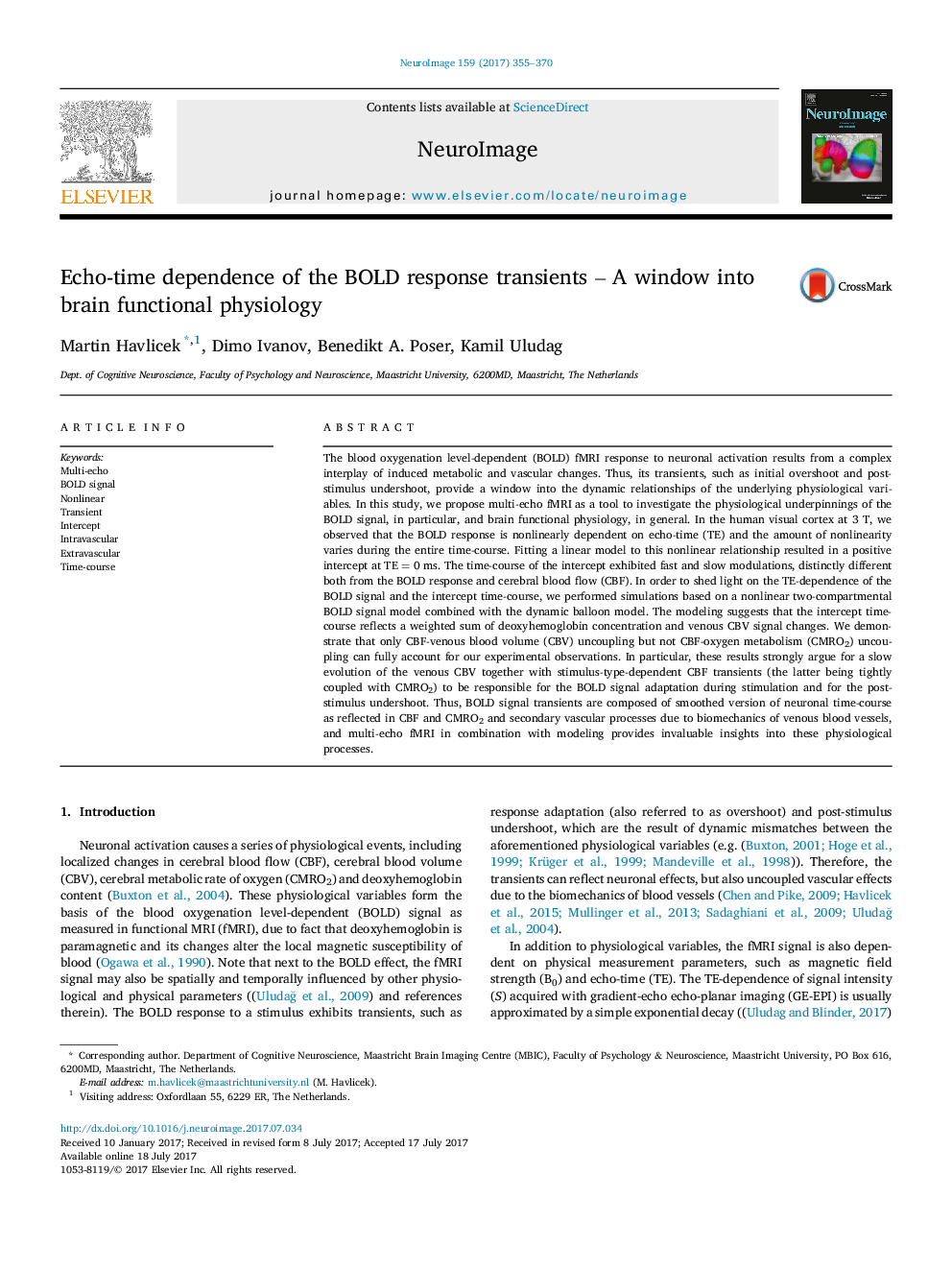| کد مقاله | کد نشریه | سال انتشار | مقاله انگلیسی | نسخه تمام متن |
|---|---|---|---|---|
| 5630862 | 1580851 | 2017 | 16 صفحه PDF | دانلود رایگان |

- Multi-echo fMRI is an excellent tool for characterizing brain physiology.
- BOLD response transients exhibit nonlinear dependence on echo-time (TE).
- Intercept time-course at TEÂ =Â 0 reflects metabolic and vascular variables.
- Two-compartmental BOLD signal model explains the intercept time-course.
- CBF-CBV uncoupling has a strong influence on BOLD response transients.
The blood oxygenation level-dependent (BOLD) fMRI response to neuronal activation results from a complex interplay of induced metabolic and vascular changes. Thus, its transients, such as initial overshoot and post-stimulus undershoot, provide a window into the dynamic relationships of the underlying physiological variables. In this study, we propose multi-echo fMRI as a tool to investigate the physiological underpinnings of the BOLD signal, in particular, and brain functional physiology, in general. In the human visual cortex at 3Â T, we observed that the BOLD response is nonlinearly dependent on echo-time (TE) and the amount of nonlinearity varies during the entire time-course. Fitting a linear model to this nonlinear relationship resulted in a positive intercept at TEÂ =Â 0Â ms. The time-course of the intercept exhibited fast and slow modulations, distinctly different both from the BOLD response and cerebral blood flow (CBF). In order to shed light on the TE-dependence of the BOLD signal and the intercept time-course, we performed simulations based on a nonlinear two-compartmental BOLD signal model combined with the dynamic balloon model. The modeling suggests that the intercept time-course reflects a weighted sum of deoxyhemoglobin concentration and venous CBV signal changes. We demonstrate that only CBF-venous blood volume (CBV) uncoupling but not CBF-oxygen metabolism (CMRO2) uncoupling can fully account for our experimental observations. In particular, these results strongly argue for a slow evolution of the venous CBV together with stimulus-type-dependent CBF transients (the latter being tightly coupled with CMRO2) to be responsible for the BOLD signal adaptation during stimulation and for the post-stimulus undershoot. Thus, BOLD signal transients are composed of smoothed version of neuronal time-course as reflected in CBF and CMRO2 and secondary vascular processes due to biomechanics of venous blood vessels, and multi-echo fMRI in combination with modeling provides invaluable insights into these physiological processes.
282
Journal: NeuroImage - Volume 159, 1 October 2017, Pages 355-370